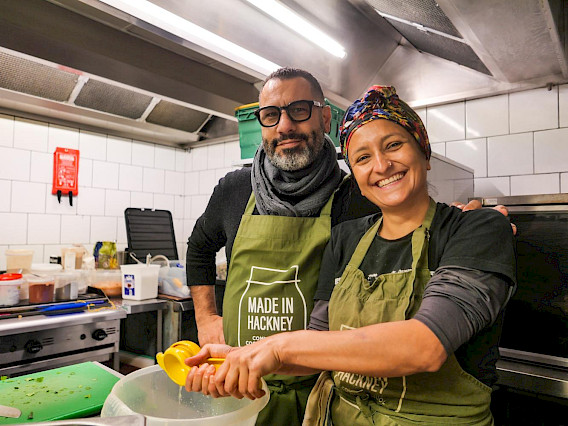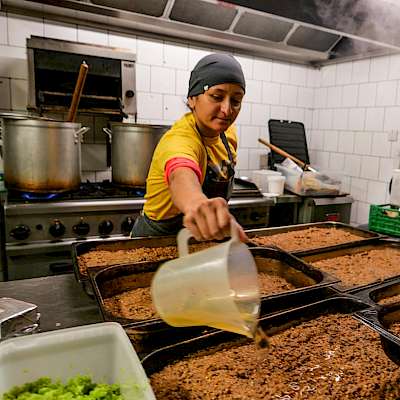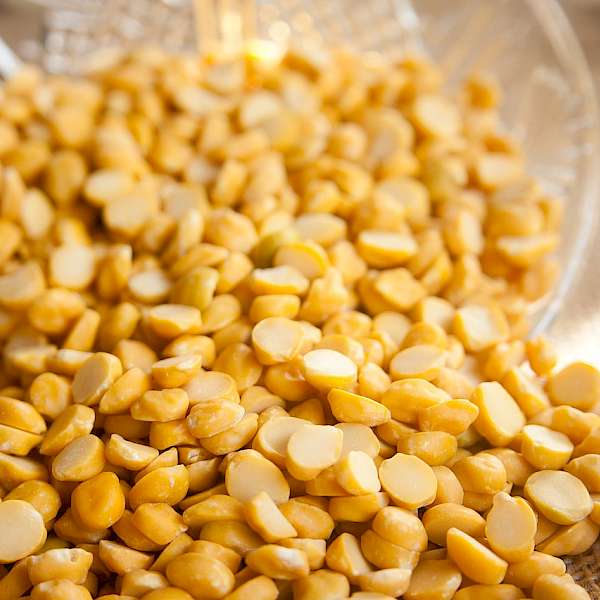Kitchari is a simple yet nourishing South Asian dish of lentils and rice that provides a protein-packed, balancing meal that is good for digestion. It is also one that warms me from the inside as it really connects me to my ancestral roots. If I was sick in childhood my dad would make kitchari, adapting the careful spice mix to reflect my ailments. I never truly understood the alchemy of his cooking in my youth and would roll my eyes at his suggestion to rub a turmeric solution on an ache or drink a herbal concoction for an upset tummy. However, I now understand that his knowledge and practice were rooted in the ancient Indian life science of Ayurveda - a practice I now follow and have deepened my knowledge of through formal education.
Kitchari is politically significant too. It is - as with most South Asian cuisine - a dish that differs across regions of India with the name reflecting locality, in the nation of 28 states and over 120 official languages plus 1000s of dialects. Known also as khichdi, kengchuri and kisuri amongst other names it represents the importance of not homogenising a dish that is cooked and eaten by millions of people daily - an experience that all too often happens when discussing South Asian cuisine. The ingredients used across the subcontinent reflect the geographical, temporal and cultural differences of the region as well as familial traditions and needs.
There are also links between kitchari and colonialism, with the development of the anglicised dish Kedgeree which commonly contains flaked fish, eggs, cream and sultanas. Some coastal parts of India might eat fish with their kitchari however it is believed that the British Raj enjoyed both fish and kitchari so combined the two to create kedgeree which uses curry powder as a key flavour - another gastronomic invention to suit the colonisers’ palates. The dishes are often confused and interchanged which pays little homage and understanding to the origin of kitchari.

Today kitchari is regularly co-opted by the predominantly white wellness industry which is fond of culturally appropriating much South Asian tradition without representation of its roots or providing space for creators or practitioners from South Asian backgrounds. A homogenised dish is regularly presented to the public without not only an explanation of its cultural significance and heritage but without acknowledging the careful balance of ingredients and spices that most Indian home cooks will undertake when cooking their version of kitchari.
This particular recipe has been carefully designed to have a spice balance that is suitable for people of all doshas (your bodily constitution as perceived through Ayurveda which acknowledges we are all subtly different and our diets and lifestyle should reflect that). For example, if someone suffers from inflammation their food might contain more cooling spices like cardamon. If the aim is to alleviate sickness there might be more water and less rice which is easier on the digestive system.
It is a warming, nourishing dish that can be enjoyed for breakfast, lunch or dinner - and in many spiritual yoga practices, it is used as a dish to reset the digestive system over a number of days. The hing (asafoetida) helps to minimise gas from the beans. The dish has a cooling effect and is suitable for people of all Ayurvedic constitutions. Coriander is an optional addition which contains antioxidants and anti-inflammatory properties. Note, this recipe is made with the split lentils that are yellow in colour, not whole mung beans which are green and take longer to cook. Enjoy kitchari with a side dish of lightly cooked and spiced seasonal vegetables for a complete and balanced meal.

